This post may contain affiliate links. For more information, please see our affiliate policy.
Do you know the difference between Champagne, Cava, Prosecco, and sparkling wine? In this Guide to Sparkling Wine, discover the grapes and methods around the world, how to taste the difference, the sweetness levels of sparkling wine, and how to serve Champagne and other sparkling wines for the best flavor and aroma.
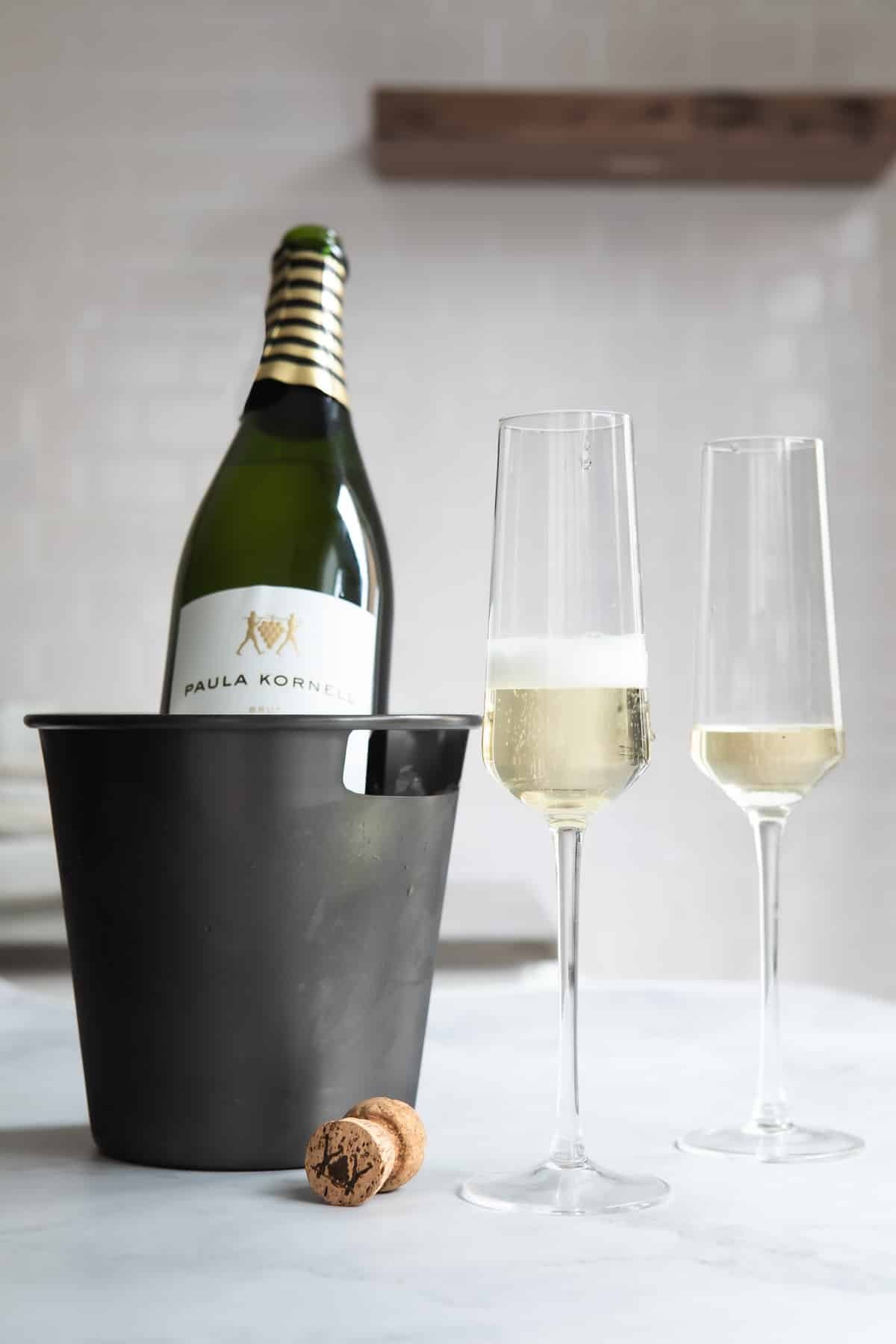
If you’ve been reserving sparkling wine for New Year’s Eve, weddings, and other massive milestones, I hope this Guide to Sparkling Wine can help convince you that any night is a good night to pop open some bubbly. A Tuesday for snack night with the ladies? Friday for a Fried Chicken dinner with the family? Sunday morning Mimosas or afternoon Aperol Spritzes? Yes, yes, and yes.
In addition to being all-too-often reserved for special occasions alone, sparkling wine is a commonly misunderstood category. There is actually a difference between Champagne and champagne, and your options in sparkling wine certainly don’t stop there.
With that in mind, I wanted to walk through this Guide to Sparkling Wine so you can shop, order, and serve your future bottles of bubbly in style.
Table of Contents
What Is Sparkling Wine?
As you might guess from the moniker, sparkling wine is bubbly fermented grape juice that can be made from white or red grapes, or a mix of the two. They are created across the world, not just in Champagne, and span from bone-dry to sweet and can vary a lot in the overall flavor profile based on the climate of the growing region and how the grapes are treated after they’re picked.
There are four main categories of sparkling wine you’ll see on the market.
- Champagne: A wine only receives Champagne designation complete with the signature capital “C” if the grapes are grown in that specific region of Northern France. It must be made via Méthode Champenoise (more on this shortly), and is often produced with a mix of Pinot Noir, Pinot Meunier, and Chardonnay. Champagnes must be aged at least 15 months prior to market release, and winemakers must adhere to strict requirements related to grape yields, pruning, and more. These wines are often crisp yet rich, demonstrating a balance of citrus, mineral, and toasty (like toffee or biscuits!) flavors.
- Sparkling wine (aka champagne): These wines can be grown and made in any part of the world, made with a wide range of grapes, and created in any of the three methods explained below. Flavor experiences vary.
- Prosecco: This Italian bubbly is fermented in vats via the Charmat method, and features the Glera grape. Proseccos err on the slightly sweeter side, compared to the other options on this sparkling wine list, and may lend some floral, tropical fruit, apple, or flavors.
- Cava: This Spanish sparkling wine is made in the same way as Champagne, but only needs to be aged for 9 months instead of 15. Cava producers also have more flexibility in terms of their growing practices and featured grapes. Macabeo (Viura), Xarel-lo, Parellada, Garnacha, Monastrell, Chardonnay, Pinot Noir, and Pinot Meunier are often mixed and matched. Cava usually tastes more citrusy than other sparkling wines, and offers tropical fruit notes and a pleasant amount of acidity.
France, Italy, and Spain aren’t the only areas making high-quality bubbly. The United States, Germany, England, Canada, Australia, South Africa, and many more are also releasing award-winning sparkling wines, and they’re able to be more creative than Champagne producers in terms of their grape blends, aging times, production styles, and vineyard locations.
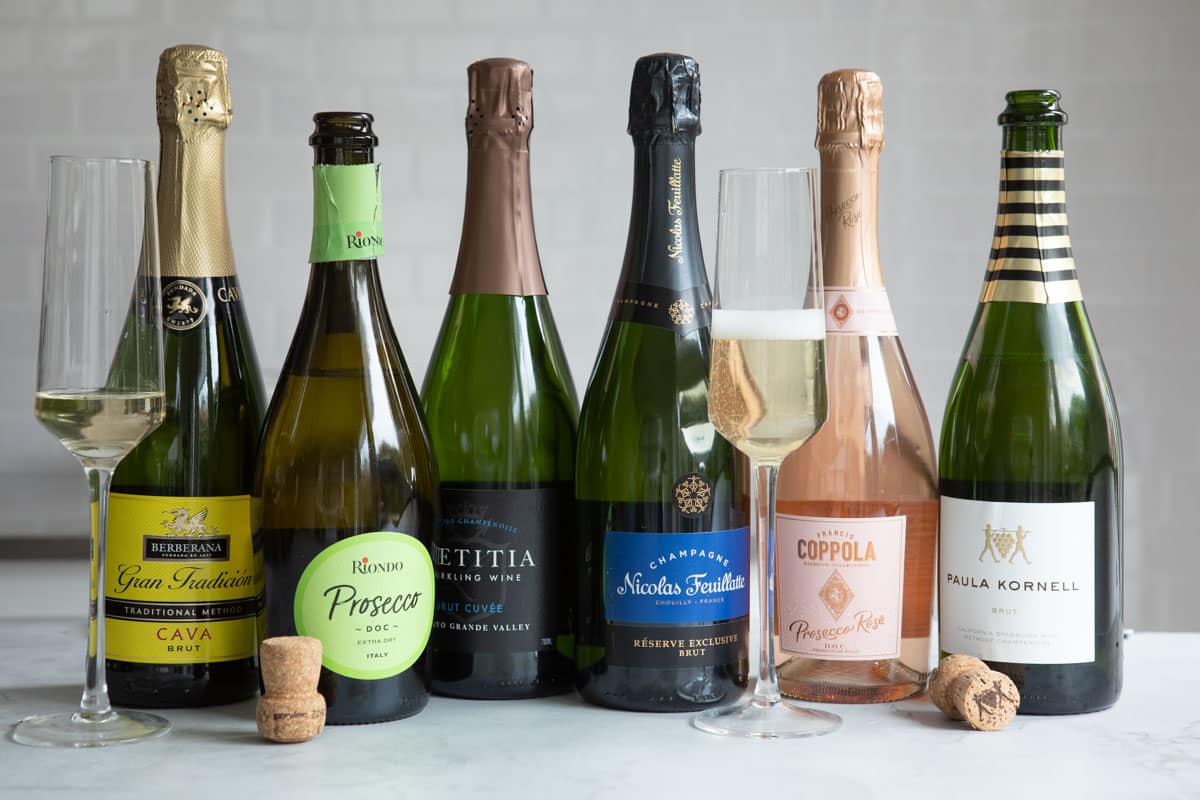
How Is Sparkling Wine Made?
Sparkling wine is produced in one of four ways.
- Méthode Champenoise: This technique originated in the Champagne region of France, and continues to be the method of choice there, but can be employed to create sparkling wines anywhere in the world. (In other areas, it’s referred to as the “traditional method” to not muddy the waters.) The second half of fermentation occurs after the wine is transferred to bottles. Here, the wine ages on its lees, or dead yeast cells, which affects the texture, smell, and taste of the finished product. Compared to vinos made in other ways, traditional method sparkling wines tend to have a softer and creamier feel, and exude more brioche and nutty qualities. The bottles are riddled, or turned, at a specific rate to loosen the sediment that gathers in the bottle. Later, they’re disgorged and recorked. Since this process requires so much TLC, traditional method sparkling wines are often more expensive than bottles made in other ways.
- Charmat: Far quicker and easier, this is the go-to method for producing Prosecco. The wine undergoes secondary fermentation in a tank, then is bottled. Since they’re not aged with the yeast cells, Charmat method sparklers err on the lighter and more fruit-forward side.
- Transfer: Consider this the happy medium between traditional and Charmat; it involves secondary fermentation within the bottle with the lees. The wine is then transferred into a tank, filtered, and bottled so the riddling and disgorgement steps can be eliminated.
- Carbonation: The least preferred method, this inexpensive production style involves pumping CO2 into the wine, just like manufacturers might do for soda.
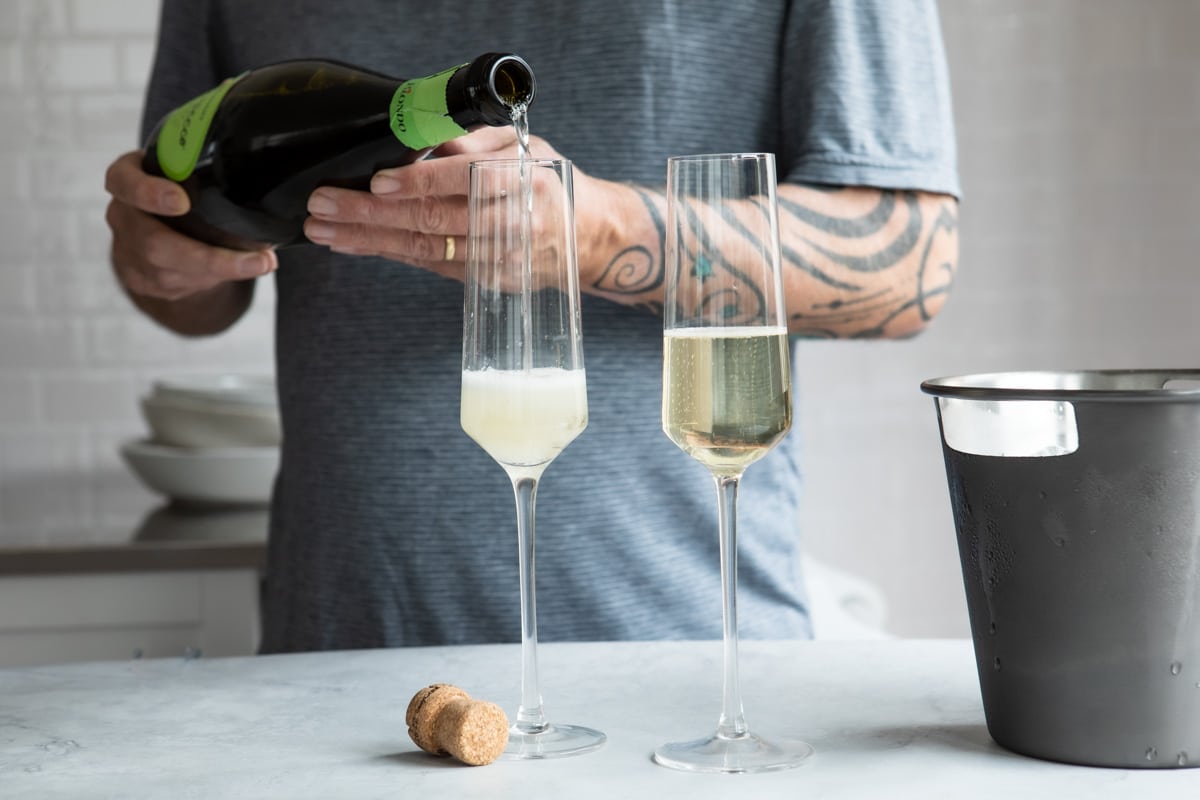
Sparkling Wine Sweetness Scale
The international sparkling wine sweetness scale is based on the amount of residual sugars (grams per liter) in the finished product. Ranging from bone-dry to very sweet, this detail should be listed on the label so you can shop according to your personal preferences:
- Brute Nature: Bone-dry (0-3 g/L)
- Extra Brut: Very dry (0-6 g/L)
- Brut: Dry (0-12 g/L)
- Extra Dry: Medium dry (12-17 g/L)
- Dry: Medium sweet (17-32 g/L)
- Demi Sec: Sweet (32-50 g/L)
- Dolce: Very sweet (50+ g/L)
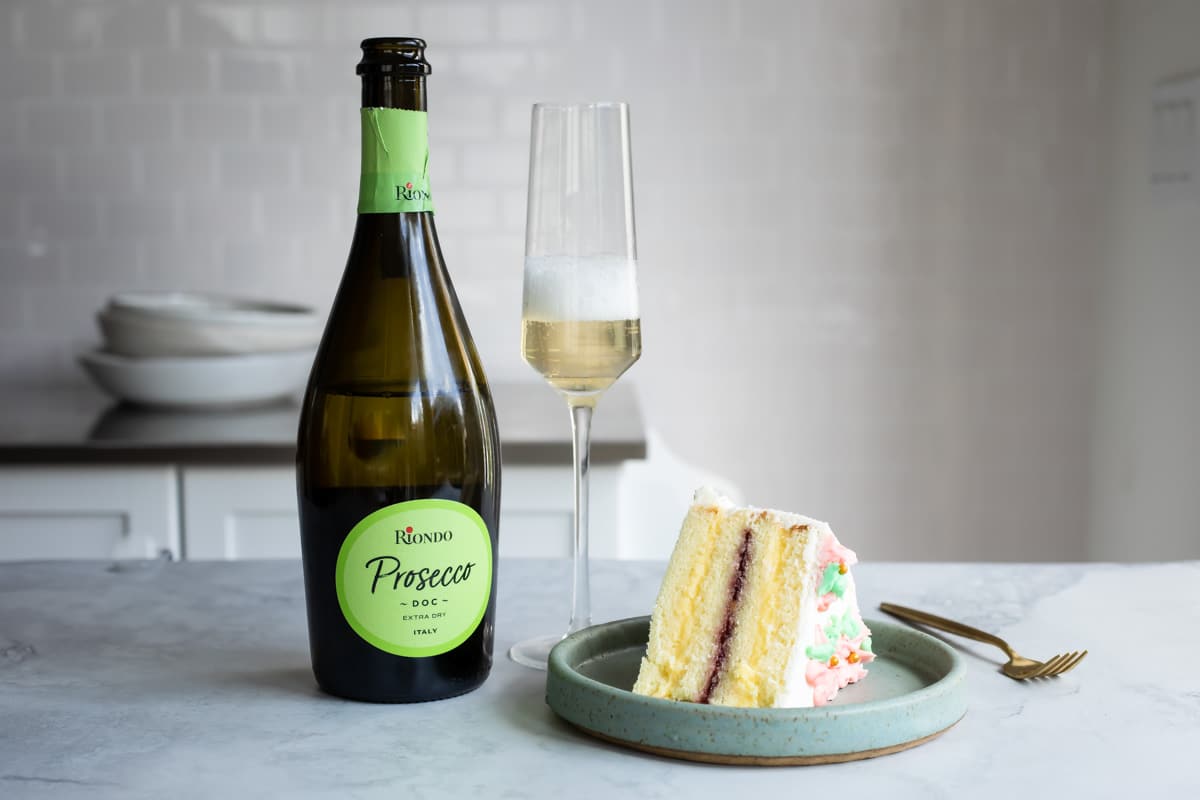
How to Open Sparkling Wine
There’s about three times as much pressure inside of a sparkling wine bottle (70-90 PSI) than in a car tire, so definitely handle with care. Opening sparkling wine in a quiet, smooth way will allow you to maximize the amount of bubbles in your glass, rather than allowing a lot of the air to escape into the air via the bottle’s attention-grabbing “POP!”
- Peel off the foil cover on top of the cork.
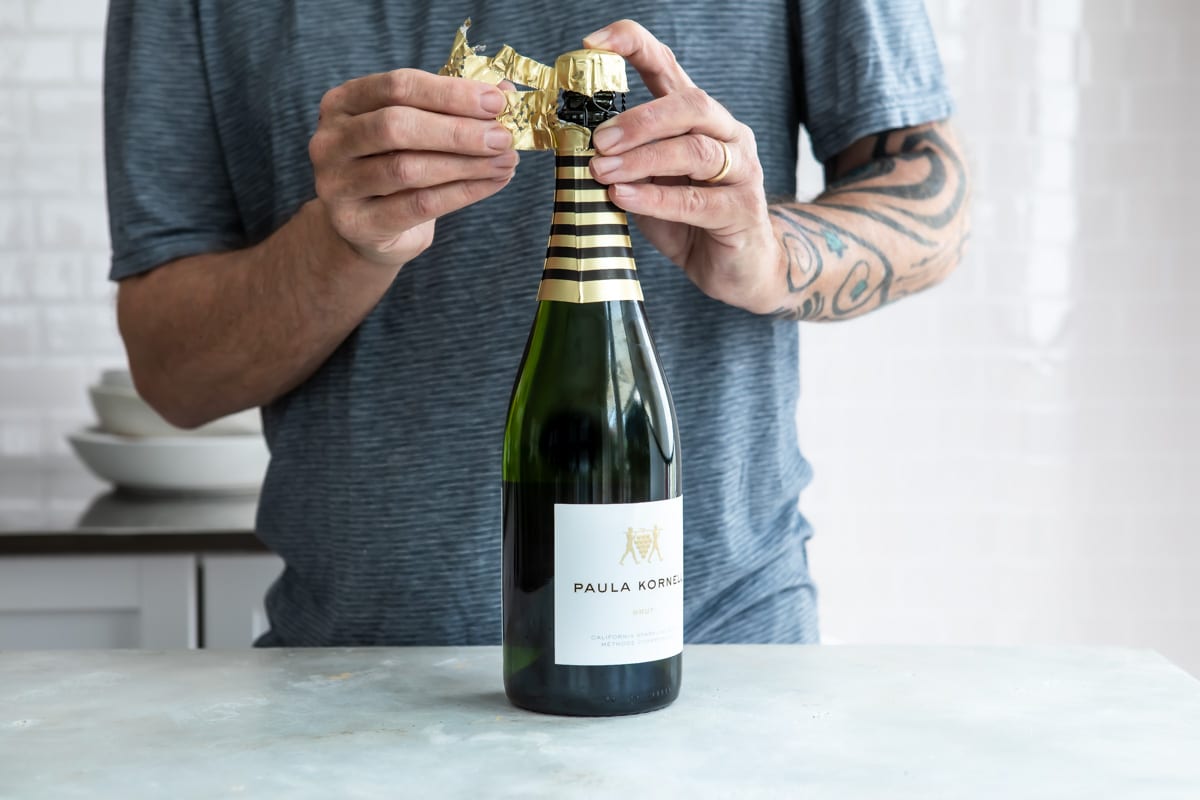
- With one thumb over the top of the cork and metal cage, twist the wire around the cage to loosen it, but don’t remove the cage. For more control and better grip, place a towel or cloth napkin over the cork.
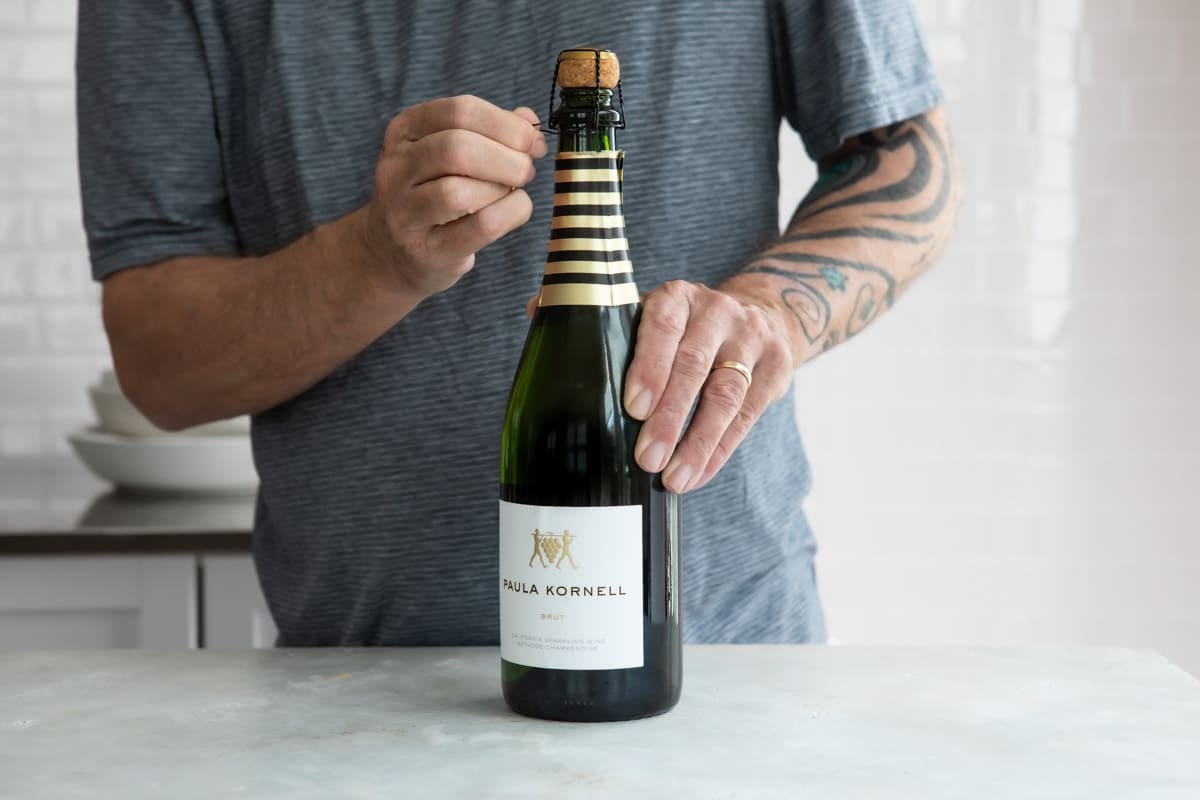
- Hold the bottle at a 45-degree angle, with the cork pointing away (but not at anyone else or anything breakable!), with one hand at the base of the bottle and one hand over the cork.
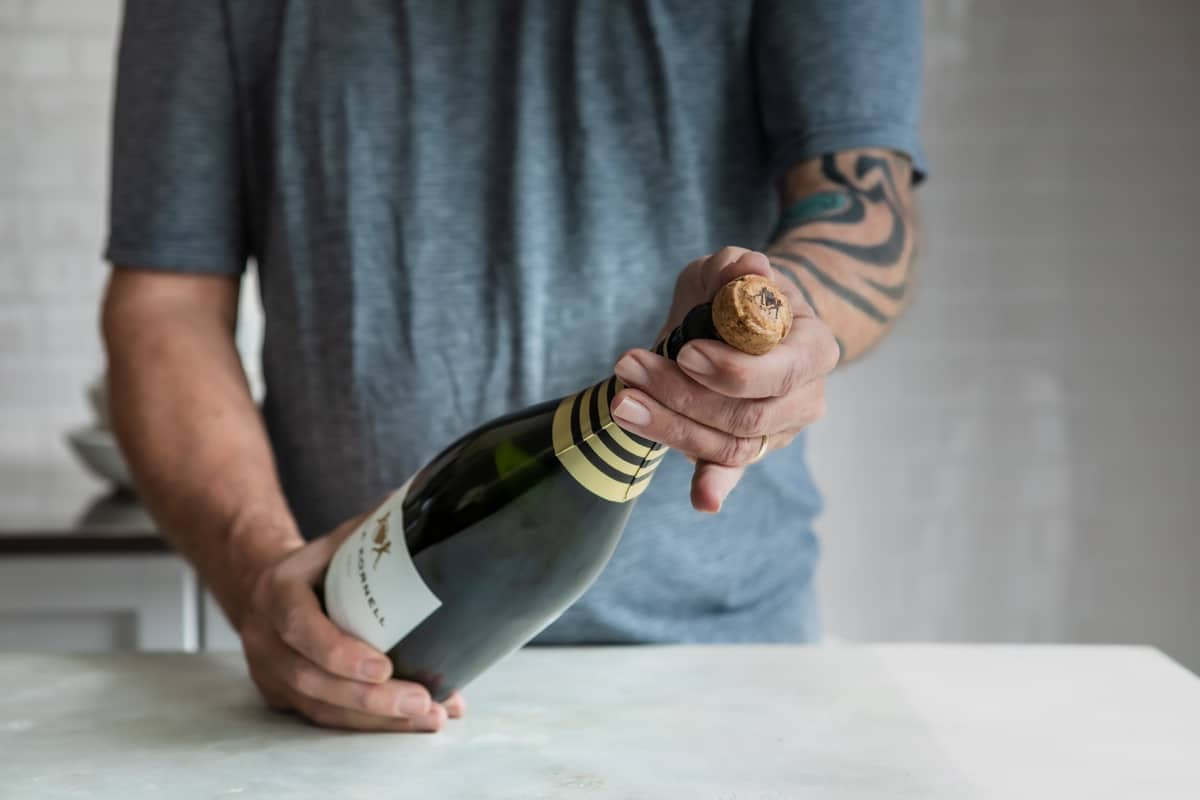
- Carefully turn the base of the bottle toward you, holding the cork steady. As the cork is about to push out completely, press down with the hand on top. You’re aiming for a subtle “psh” sound as the cork releases from the bottle.
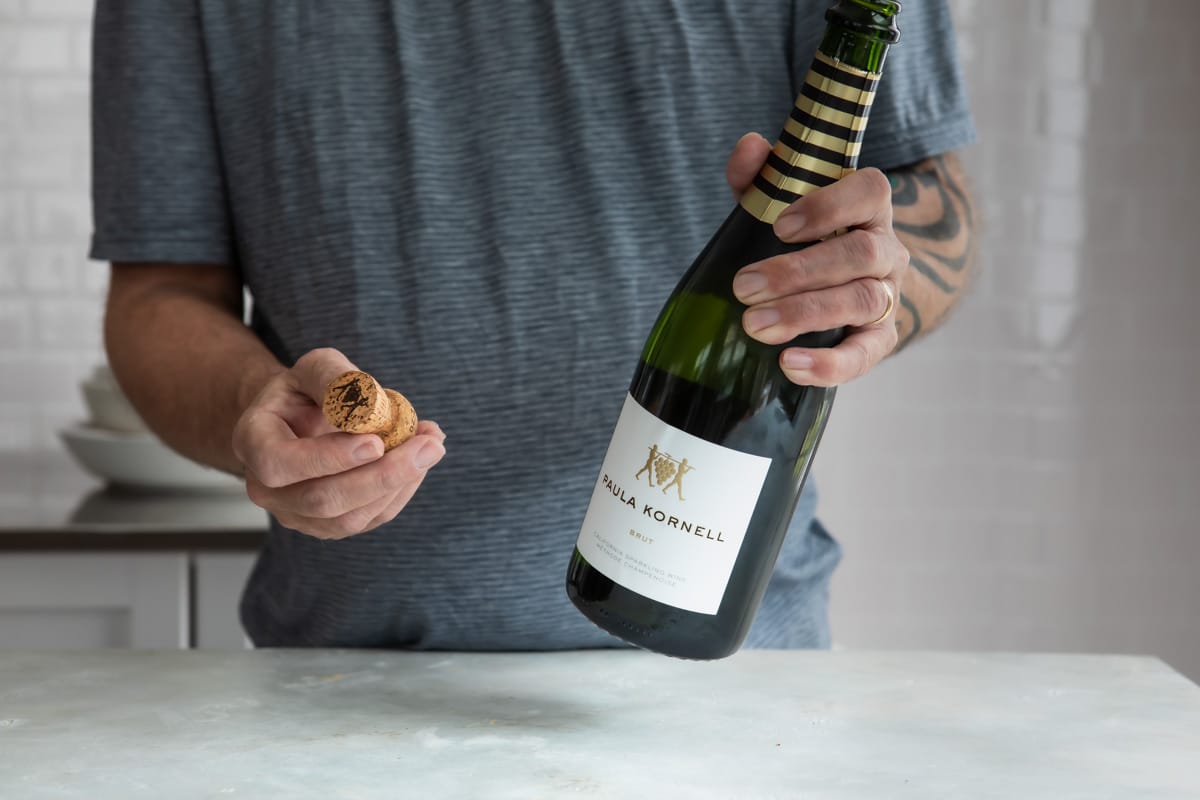
How to Serve Sparkling Wine
The best Champagne serving temperature is cooler than with red wine and white wine. To optimize the tasting experience, here’s the ideal temp to serve each wine:
- Sparkling: 40-50 degrees F
- Lighter whites: 45-50 degrees F
- Fuller whites and rosés: 50-55 degrees F
- Lighter reds: 55-60 degrees F
- Fuller reds: 60-65 degrees F
Use a wine refrigerator, your regular refrigerator, or if you’re in a hurry, chill a bottle of bubbly in a vessel filled with salty ice water.
In terms of glassware, feel free to retire those tall, thin flutes or bowl-like couples. A white wine glass works well to serve sparkling wine, since it allows the wine to emanate its aromas (by way of the bubbles) while preserving the bubbles longer than a coupe that allows them to rise to the surface and “escape” at a more rapid pace.
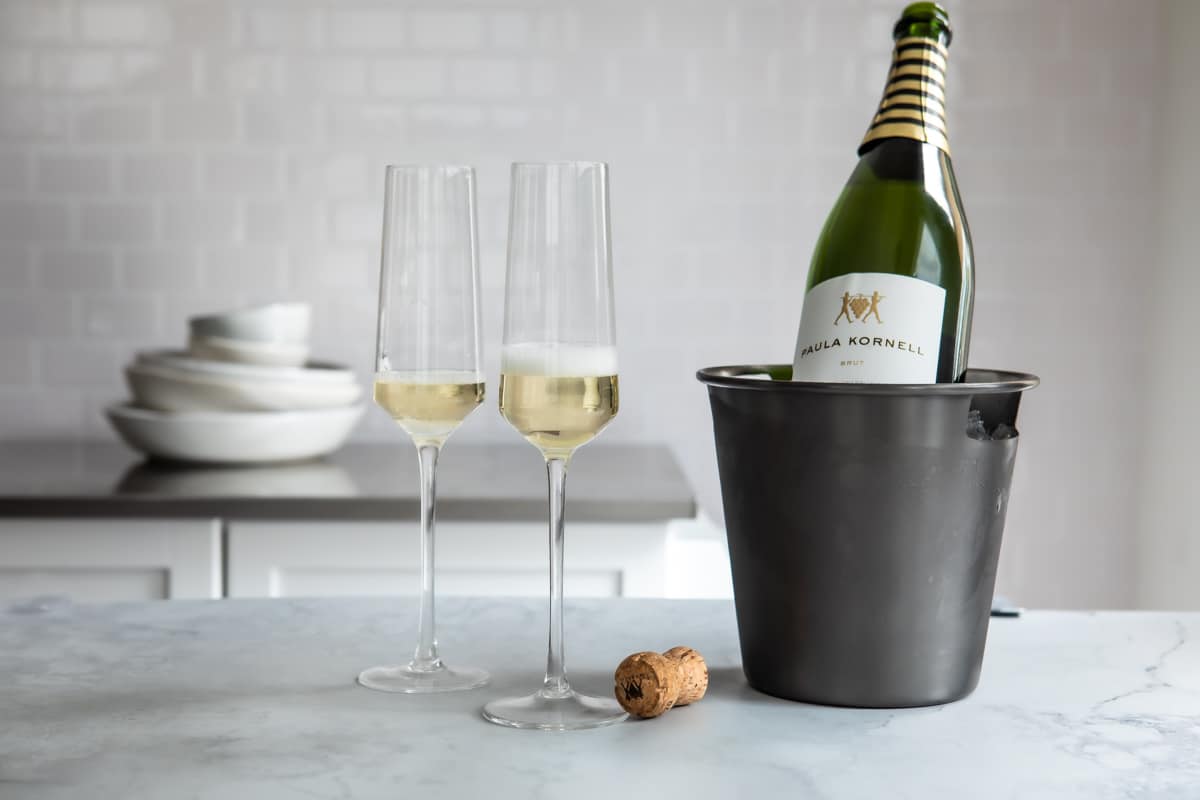
Sparkling Wine Recipes
I love to stock sparkling wines of all kinds to feature as part of a Mimosa Bar or to pour in a round of Bellinis for brunch. Come happy hour, you can’t go wrong with fruit-studded White Sangria, a classic Champagne Cocktail, and you certainly go wrong with sipping that bubbly straight!
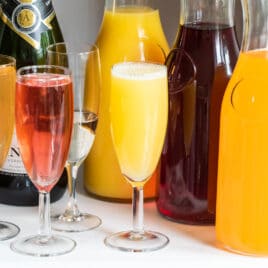
1
Mimosa Bar
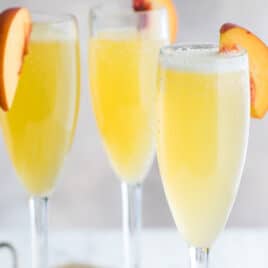
2
Peach Bellini Recipe
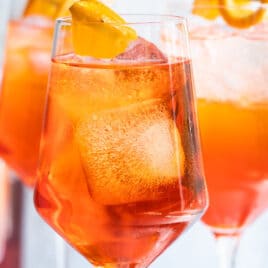
3
Aperol Spritz
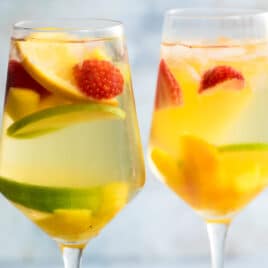
4
White Sangria
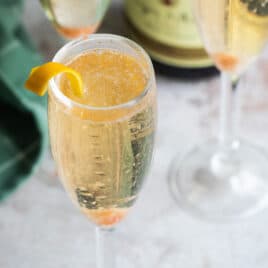
5
Champagne Cocktail
If you’re just starting out in the wine world, check out my guides for the basics and beyond:
- A Guide to Red Wine
- A Guide to White Wine
- A Guide to Rosé Wine
- The Best Wine Aerators
- The Biggest Wine Myths, Resolved
Meggan Hill is a classically-trained chef and professional writer. Her meticulously-tested recipes and detailed tutorials bring confidence and success to home cooks everywhere. Meggan has been featured on NPR, HuffPost, FoxNews, LA Times, and more.
This was super informative! Adding to my bookmarks. Thank you!
You’re so welcome, Carol! Take care! – Meggan